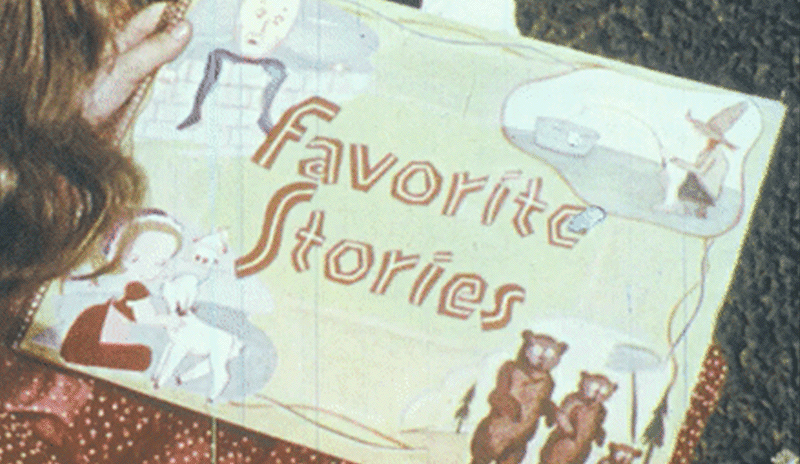Selling has changed. It’s been a long time since you could send someone to head office with a briefcase full of brochures and expect that to do the job. Face-to-face sales meetings have all but vanished over the last twelve months. But even before the pandemic much of the sales process had transferred online.
This is the first in a short series of articles to explore the new relationship between content, sales and marketing.
These days, almost every buying decision is played out on the web. From searching for answers to problems, to ‘just looking’ to identifying possible solutions, or checking out recommendations and referrals, we do it online, at a time that suits us.
It’s true especially in the case of long complex sales, involving multiple stakeholders and decision makers and big budgets. Chances are you’ll rarely or never meet some of the key people holding sway over the decision to explore working with you.
The buying process in large organisations is often fractured; between people and departments, between people whose job it is to find solutions like the one you offer, and influential people who have less time but whose opinions count heavily, between people who actively want what you’re offering and those who want to preserve the status quo.
And underlying all this ‘arm’s length and at our own pace’ digital research, exploration and comparison is the knowledge that business is still, ultimately, all about people. Decision makers choose collaborators and suppliers where they feel a cultural fit, as well as see a rational one. Where they like you and trust you to do the best for them. But if you can’t get in front of them, it’s not easy to start building that kind of relationship.
So what does all this mean for your sales and marketing strategy? What links the online buyer journey to the in-person one? What creates continuity for both buyer and seller? What builds momentum through insight, trust? What establishes and maintains direction as decisions on scope, and solutions and partnerships are delegated, scrutinised?
What can create and supercharge a sense of certainty in an uncertain, often arms-length process?
Content. That’s what.
Content: what does that even mean?
You can come at that answer purely by the sales perspective. It helps to think of the tasks and responsibilities of the sales team. They need to:
Engage – start the conversation. Be personable. Represent the team. It’s often the first meeting with your brand, so they need to make a good impression
Listen – understand requirements. Show empathy. Acknowledge the doubters and try and bring them along with you.
Paint the big picture – help the client believe in the transformation, show that change is possible
Bring the benefits to life – help the client imagine the improvements, make it feel real and within reach, show relatable and relevant examples
Co-create the solution – If what you’re offering is not an off the peg solution, work with the client to design something that will fit the requirements.
Sign post – to other people in your team who could answer technical questions, to other clients who would chat through their experience of working with you.
Be an approachable expert – help them move their thinking on, offer a new perspective, share expertise
Build trust – make them believe in you, and trust you with their business/brand/livelihood/reputation
Close the deal – help the client buy the solution that’s right for them
If you think of your content as a living breathing member of the sales team, then what you have in that list is a pretty good job description for them. Create digital content to tackle all of those jobs and – football analogy coming up – it’s like having a twelfth player on the field. They attack and defend. Maintain possession of the ball. And can score goals for you, often at critical points in the match. They’re still playing for you when you’re not on the pitch. They elevate you, your team and your performance when you are.
For instance? Content can help you to co-create the solution. Getting people to start picturing the benefits of working with you is a key point in a sale. Making it feel real, rather than theoretical, helps shift people towards a buying decision. A good salesperson intuitively knows that, and good content can replicate that.
And how about content that invites people to engage with it – putting in their specifications, playing with figures, extrapolating data, visualising results – is one way that you can help buyers in a service sale picture the benefits of choosing you.
Truth is, your content can do lots of things. To cut the content challenge – and this article – down to size we’ve focused on three specific sale challenges, and the goals for content that helps fix them, in the final section.
When sales is marketing and marketing is selling
Marketers reading this might by this point be thinking: content – my team, my job? You’re half right. In our experience, this new way of selling requires marketers and salespeople developing much more intimate working relationships. More like conjoined twins than teammates, they are having to evolve organs and senses in common – heart, brain, sight, touch.
The content needs to run the length of the buyer journey, touching each of those tasks above methodically. What it has in common – the thread of continuity – is your story. We’ve written more about why story is essential in B2B selling here. For now, just bear with.
Your story will need to be consistent along the journey and belongs to everyone. The content is inspired and shaped by your story, and is everyone’s responsibility. At the start of the buyer journey, when the experience is mainly digital and arms length, marketers are delivering the content. As responses and decisions get more intimate and urgent, it’s salespeople.
Once you, the salesperson, gets in the room (digitally or in-person) you are the living embodiment of both story and storyteller. You are not alone though. Your content is the unnamed teammate on the pitch. You can share it there and then, and you can follow up with more. It boosts your relevance, your relatability and your expertise: and it creates consensus.
Right. Getting to specifics.
3 content insights for salespeople, that marketers should know
Challenge: The easiest thing for any customer to do, is nothing.
Insight: Your content can help your customer see the true nature and scale of their problem. And the size of their opportunity if they brave the change.
The status quo is often the biggest challenge. Change is hard. It’s expensive, disruptive, and it makes life difficult for a while. Most of us will live with and work round all kinds of problems rather than deal with them head on. So having content that brings that pain – and the relief of it – into the open is really useful.
Content that explores the true cost of doing nothing is helpful for the sales team. It can exist in many forms. Articles that set the problem in context and shine a torch on the number of hours wasted, opportunities lost, targets missed as a result of x. Blogs that pull back the rug that we’ve been sweeping the problem under and bring it blinking into the light – together with an empathetic pathway towards a solution – are good to have.
The key here is to make the content as helpful as possible. This is content that you want people to discover early on in the sales process – when they’re just thinking that maybe they need to do something about it. It’s not hard sell and solutions heavy. It’s putting you in the position of being a helpful expert. Someone who totally understands the problem, and has a proven way out for them, when they’re ready. Make it action orientated – give them one useful first step and invite them back for more.
Challenge: Too many choices to make: too few insights to make them.
Insight: Helping your customer make evidence-based choices of solutions and partners – letting them picture their particular nirvana – builds influence.
Content like this is never about you, but always leads to you. Help a customer visualise and build their dream solution, tailored for them. This content can work at many levels. For instance:
-
- Demystifying the choices. Present the pros and cons in plain language.
- Provide actionable guidance on RoI
- Present case studies that highlight the resulting transformation, in areas that your many influencers will feel are relevant.
- Templates and/or workbooks that allow your customer to run ‘what if’ scenarios, comparisons with others (they’ll be doing it anyway), and ultimately build a list of requirements that informs an RFI.
This content invites engagement. Your marketing team will know how push some (free), and gate some, and track who’s engaging. That can be via the website or one-to-one through sales enablement tools. Capture that information, and respond with more useful next steps to build momentum.
Challenge: Complex sales follow looping processes.
Insight: Your content can help create consensus and certainty.
Buying decisions get referred up, down and sideways. New people in the buying chain will be viewing the decision through different lenses, but it’s likely that each of them will need to get up to speed on the scale of the challenge, (why are we considering this now?) your solution, (what exactly are we going to get?) and your credibility as an organisation (who are these people?). You need easily found and shared content that gives a consistent answer to each of those big questions.
Your website is the obvious place for this content to live. It should be able to deliver that feeling of certainty around your credibility, and inspire people to explore more. But it can live elsewhere too. Thought leadership articles on LinkedIn, for example, can be another way to start building consensus. Make it simple for someone to link a colleague into a discussion around your content. P.R. that underlines your sustainable ethos, or your diversity policy or your work in the community is good to seed into general circulation. Make it easy for someone to stumble upon third party evidence of your good business credentials.
Next steps
This is the first article in a short series exploring the new relationship between content, sales and marketing. You can find the next article – with a content toolkit for you to try out – here. And if we’ve piqued your interest and you have questions, reach out to us on email, social or by phone. Just scroll to the bottom of the page for contact details.
All of our expert content is published first in our our fortnightly storyboard – The Clec. Signing up is the easiest way to get the latest and greatest direct to your inbox.






What do you think?